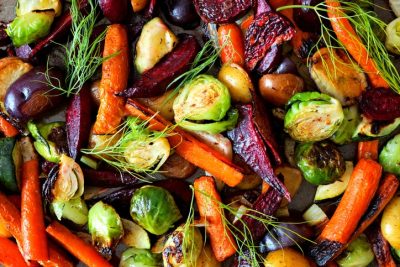Autumn is the Perfect Time to Sow: A Guide to Australian Fall Planting

Autumn in Australia, with its cooler temperatures and increased moisture, is the ideal time to get your garden ready for a bountiful harvest. Whether you're a seasoned green thumb or a curious beginner, sowing seeds in autumn allows your vegetables, flowers, and even some fruits to establish strong root systems before the harsher winter sets in.

This article will guide you through the exciting world of autumn seed planting in Australia, exploring:
- The best seeds to sow: We'll delve into the specific planting instructions for vegetables, flowers, and even some fruits suitable for autumn planting in Australia.
- Germination essentials: Discover how heat mats, humidity domes, and organic soil can optimize your seed germination success.
- Seed starting with Natural Yield: We'll explore how the equipment available at Natural Yield can simplify and enhance your seed-starting journey.
A Riot of Color: Pkants to Sow in Autumn (with Planting Instructions)
- Vibrant brassicas:
- Planting: Sow broccoli (Brassica oleracea) and cauliflower (Brassica oleracea var. botrytis) seeds directly into seed trays or small pots 1/2 cm deep in autumn. Space seeds 5 cm apart. Thin seedlings to the strongest one per pot when they have a few sets of true leaves.
- Germination: Aim for soil temperatures around 18-21°C. You can use a heat mat for consistent warmth during germination.
- Light: Seedlings need plenty of sunlight, so place trays in a sunny location or use grow lights.
- Sweet alyssum (Lobularia maritima):
- Planting: Sprinkle alyssum seeds thinly over the surface of a seed tray filled with moist organic seed-starting mix. Don't bury the seeds; press them gently into the soil.
- Germination: Seeds germinate readily in cool weather (around 15-20°C). A humidity dome can help retain moisture during this stage.
- Light: Provide bright, indirect light for optimal growth.
- Showstopping calendula (Calendula officinalis):
- Planting: Sow calendula seeds directly into seed trays or small pots 1/2 cm deep in autumn. Space seeds 5 cm apart.
- Germination: Calendula prefers cooler temperatures (around 15-20°C) to germinate.
- Light: These cheerful flowers thrive in full sun.
- Australian natives:
- Planting: Planting requirements vary for different native wildflowers. Research the specific needs of your chosen variety. Many benefit from direct sowing into a prepared garden bed in autumn.
- Germination: Some native seeds benefit from scarification (nicking the seed coat) to improve germination. Refer to specific instructions for your chosen variety.
- Light: Most Australian natives prefer full sun locations.
Bountiful Harvest: Vegetables for Autumn Planting (with Planting Instructions)
- Root power:
- Planting: Sow seeds for root vegetables like carrots (Daucus carota sativa), beetroot (Beta vulgaris), and onions (Allium cepa) directly into a prepared garden bed in autumn. Follow seed packet spacing recommendations for each variety.
- Germination: Maintain consistent moisture during germination. A light row cover can help retain moisture and protect seedlings from harsh elements.
- Light: Root vegetables need full sun for optimal growth.
- Leafy greens galore:
- Planting: Sow spinach (Spinacia oleracea), kale (Brassica oleracea var. sabellica), and Swiss chard (Beta vulgaris subsp. cicla) seeds directly into a prepared garden bed or seed trays in autumn. Space seeds according to packet instructions.
- Germination: Aim for soil temperatures around 15-20°C.
- Light: Leafy greens prefer full sun to partial shade.
- Peas in a pod:
- Planting: Sow snow pea (Pisum sativum var. saccharatum) and broad bean (Vicia faba) seeds directly into a prepared garden bed in autumn. Follow seed packet spacing recommendations. You can also sow these seeds in large pots for container gardening.
- Germination: Peas prefer cooler temperatures (around 15-20°C). Provide some support for climbing pea varieties.
- Light: Peas need full sun for optimal growth.
- Strawberries (Fragaria × ananassa):
- Planting: Purchase bare-root strawberry plants in autumn and plant them directly into a prepared garden bed or raised garden. Space plants according to packet instructions, typically around 30cm apart. Ensure the crown of the plant sits just above the soil surface.
- Germination: Strawberries don't require germination from seed indoors. Established bare-root plants will start growing new foliage in spring.
- Light: Strawberries require full sun for at least 6-8 hours daily for optimal fruit production.
By following these specific instructions and utilizing the seed-starting supplies from Natural Yield, you can set your autumn plantings on the path to success. Remember to research specific planting times for your region and choose varieties suited to your climate for the best results.
Getting Started with Natural Yield
Natural Yield offers a variety of seed-starting supplies to make your autumn sowing a success. Here's what you can find:
- Seed trays: Look for https://www.theseedcollection.com.au/Seedling-Tray in various sizes and cell counts to accommodate different seed types and your planting needs. Natural Yield offers options like the popular 32 Cell Seed Starter Trays https://www.theseedcollection.com.au/Seedling-Tray mentioned on their website.
- Humidity domes: These transparent covers https://www.aquagardening.com.au/aquaponics/seed-starting/propagation-domes/ help retain moisture and create a mini greenhouse effect around your seedlings.
- Heat mats: Natural Yield offers heat mats https://www.theseedcollection.com.au/Heat-Mat to gently warm the soil, promoting germination for seeds that prefer warmer temperatures.
- Organic seed-starting mix: Provide your seeds with the perfect start with organic seed-starting mix https://www.urbanrevolution.com.au/products/premium-organic-seed-raising-mix available at Natural Yield. This provides essential nutrients while remaining gentle on your seedlings.













